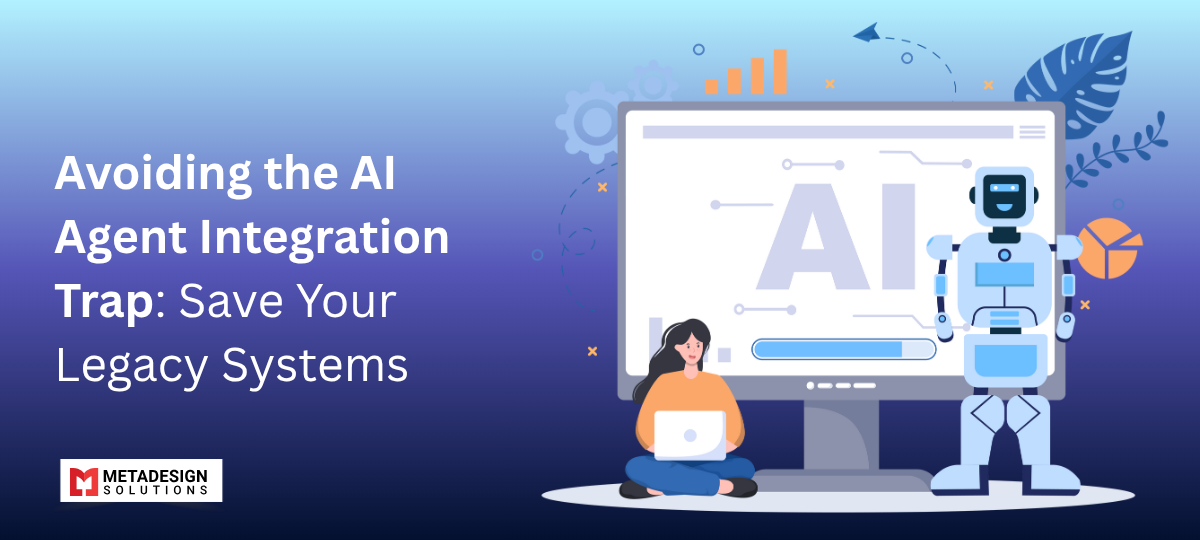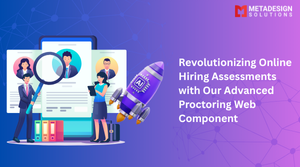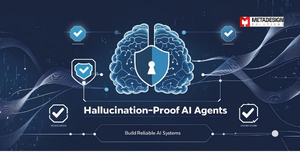Introduction: The Rise of AI Agents in Enterprises
AI agents—autonomous software systems capable of decision-making and task execution—are rapidly becoming central to digital transformation. Enterprises are eager to integrate these agents into customer service, analytics, IT operations, and more. But with that speed comes a hidden trap: incompatible legacy systems.
The cost of a failed AI integration? According to industry estimates, botched integrations can cost enterprises millions annually in downtime, customer dissatisfaction, and technical debt. This blog explains how to avoid that trap.
What Are AI Agents? A Brief Overview
AI agents differ from traditional software components by being:
- Autonomous: Able to act without human intervention
- Adaptive: Learn from inputs over time
- Context-aware: Understand and operate within the context of larger systems
- Conversational: Often using NLP and LLMs to communicate (e.g., customer support bots, internal AI copilots)
AI agents development services are often powered by technologies such as:
- Large Language Models (LLMs)
- Reinforcement learning
- Robotic process automation (RPA)
- Knowledge graphs
Why Legacy Systems Struggle with AI Agents
Most enterprise architectures contain a mix of old and new systems. Legacy ERPs, on-prem databases, monolithic CRMs, and hardcoded scripts are rarely designed for real-time API communication or contextual awareness.
Common Pain Points:
- Lack of API endpoints for dynamic data retrieval
- Data silos and inconsistent formats
- Tightly coupled codebases and low modularity
- Security protocols that do not accommodate AI-driven access patterns
- Poor observability—no event tracing or telemetry support
Example: A financial institution deployed an AI chatbot integrated with their 10-year-old core banking system. Within 2 weeks, the chatbot had caused multiple data mismatches due to outdated API schemas.
Key Technical Considerations Before AI Agent Integration
1. System Audit and Technical Readiness Assessment
- Inventory all legacy systems and versions
- Review API availability and data access methods
- Check performance under concurrent access
- Identify brittle areas with change resistance
Tools you can use: Postman, Swagger, OpenTelemetry, APM tools like New Relic or Datadog
2. Use of Middleware and Integration Layers
Introduce an AI orchestration middleware that acts as a bridge between AI agents in 2025 and older systems.
Options include:
- MuleSoft
- Apache Camel
- Zapier or Workato (for low-code use cases)
- Custom-built Node.js or Python middleware
3. API Wrappers and Legacy Adapters
If your legacy systems lack APIs, consider building wrappers:
- SOAP to REST converters
- CLI script runners wrapped with HTTP endpoints
- Data scraping utilities with rate-limiting controls
Don’t Let AI Break What Already Works.
Discover how to integrate AI agents without disrupting your legacy systems—read the full guide now.
Architectural Patterns for Safe Integration
1. Strangler Fig Pattern
Gradually replace legacy features with modern equivalents while keeping both systems live.
2. Event-Driven Architecture (EDA)
Use Kafka, RabbitMQ, or AWS SNS/SQS to create real-time communication between agents and systems.
3. Microservices Facade
Expose key legacy functions as microservices. AI agents interact only with the facade.
Security Risks in AI Agent-Legacy System Integrations
- Excessive permissions: AI agents often need broad access. Enforce role-based access control (RBAC).
- Audit gaps: Many legacy systems don’t log non-human interactions well.
- Token sprawl: AI agents using LLM APIs may leak tokens if not securely managed.
Mitigation Techniques:
- Implement Zero Trust architecture
- Encrypt all agent requests with TLS
- Use API gateways like Kong, Apigee, or AWS API Gateway
Real-World Case Studies
Case 1: AI Support Agent + Legacy CRM
A retail brand integrated an LLM-based AI support agent with their legacy CRM. Within 3 months:
- Reduced customer support time by 45%
- Required a custom GraphQL wrapper around the CRM for compatibility
Case 2: Manufacturing Firm’s AI Scheduling Bot
The company used RPA agents to automate production scheduling from a 15-year-old SAP ERP. Key wins:
- Used Apache NiFi as a data bridge
- Saved $2M annually in scheduling errors
Common Pitfalls to Avoid
- No rollback plan in case AI agent malfunctions
- Over-reliance on real-time data from slow legacy systems
- Ignoring version control and changelogs for adapter layers
- Not sandboxing AI agents before production deployment
Best Practices for Seamless AI Agent Integration
- Start with a proof of concept in a non-critical business unit
- Create a digital twin of your legacy environment for testing
- Use observability tools to monitor agent behavior
- Maintain a versioned API contract between agents and middleware
- Establish a human fallback protocol for critical actions
Conclusion: Build Smart, Not Fast
Integrating AI agents can unlock powerful automation and decision-making across your business—but only if done right. With careful planning, architectural discipline, and the right tech strategy, you can avoid the integration trap and ensure your legacy systems remain valuable assets rather than costly liabilities.
Need help integrating AI agents with legacy systems? Schedule a consultation with MetaDesign Solutions today.
Hashtag Related:
#AIIntegration #LegacySystems #AIAgents #SystemCompatibility #TechStackUpgrade #EnterpriseAI #DigitalTransformation #IntelligentAutomation #AIDevelopment #ITStrategy #FutureProofTech #TechInnovation #SmartAutomation #AIAgentDevelopmentCompany #AIAgentDevelopmentServices #CustomAIAgentDevelopment #HireAIAgentDevelopers #AIAgentDevelopmentSolutions



